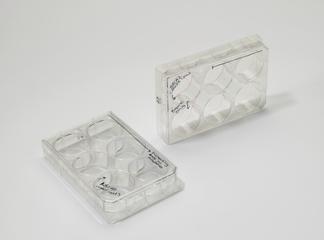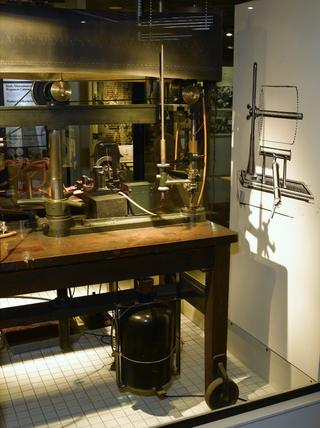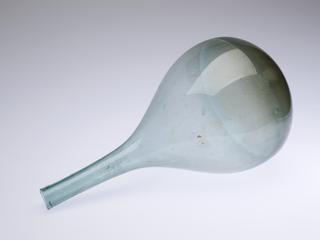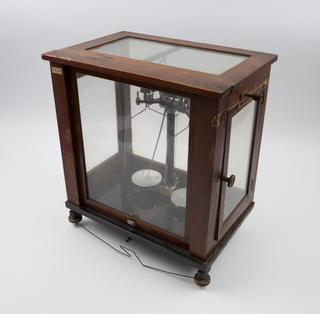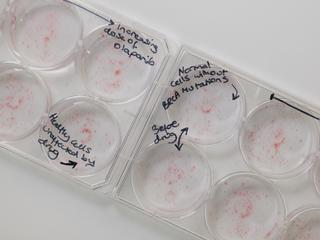
Oxygen cylinder used by climbers on 1953 Mount Everest expedition
- Made:
- 1952-3 in unknown place
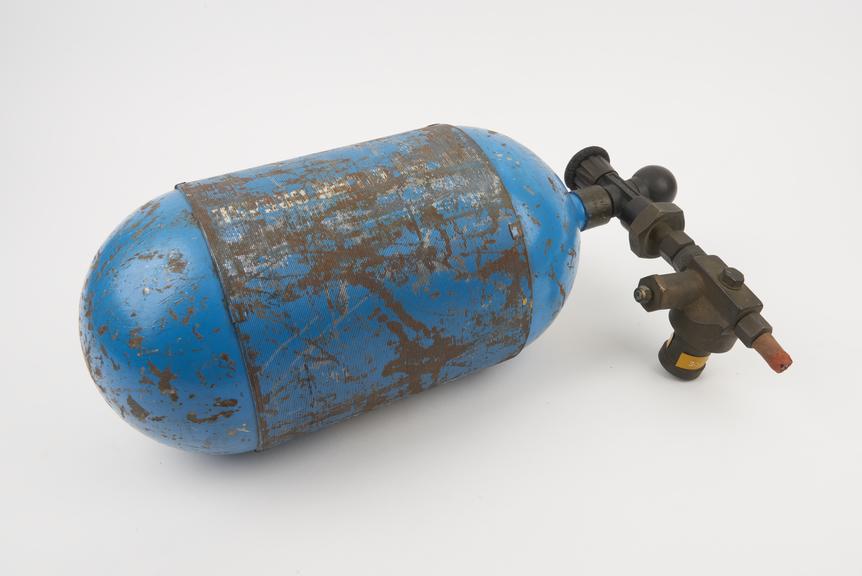
RAF oxygen cylinder used by climbers when sleeping, used by Dr Griffith Pugh to provide physiological data for and during the Mount Everest expedition of 1953, United Kingdom, 1952-3.
What does it take to climb Everest, the world’s tallest mountain? As altitude increases atmospheric pressure decreases. This means that there is less oxygen available – at the summit of Everest atmospheric pressure is about one third of the pressure at sea level. The use and benefit of supplementary oxygen when climbing Everest had been the subject of much debate in the pre-war Everest expeditions. All had taken supplementary oxygen and some climbers had found some benefit from it, but the equipment was heavy and bulky which limited its effectiveness. Low levels of oxygen in the blood have serious consequences for not only the physical health of climbers, but also their decision making and critical thinking skills. The lack of oxygen reaching the brain also makes it difficult to sleep, which increases climbers’ fatigue and therefore has a significant impact on their climbing ability and resilience. Pugh recommended an oxygen flow rate of 1l per minute while sleeping as opposed to the rate of 4l per minute used during intensive work. Edmund Hillary and Tenzing Norgay used oxygen while sleeping at 8503 meters (27900 feet) the night before their successful summit attempt.
By the 1950s, there had been several attempts to summit Everest and some climbers had got very close, but none had made it. The pioneering research of Dr Griffith Pugh was a key factor in the success of Edmund Hillary and Tenzing Norgay’s climb in 1953. Pugh’s background made him uniquely suited to this work. He was a practising doctor, but also a world class skier. He was selected to represent Great Britain in skiing at the 1936 Winter Olympics, but he was unable to attend due to injury. He also trained soldiers at the School of Mountain Warfare in Lebanon during the Second World War. It was here that Pugh began to research the impact of high altitude and extreme conditions on the body, leading to his work on Everest. Pugh took part in the expedition to Everest in 1953 and the preparatory expedition in the Himalayas in 1952, believing that laboratory research could not accurately recreate the experience of being in these extreme environments. His work established principles about acclimatising to altitude, food and water consumption during climbs, and oxygen usage that continued to be used by climbers for decades.
Details
- Category:
- Laboratory Medicine
- Object Number:
- 2017-56
- Materials:
- metal (unknown) and rubber (unidentified)
- Measurements:
-
overall: 180 mm x 460 mm x 280 mm,
- type:
- oxygen cylinder
- credit:
- Simon Pugh
